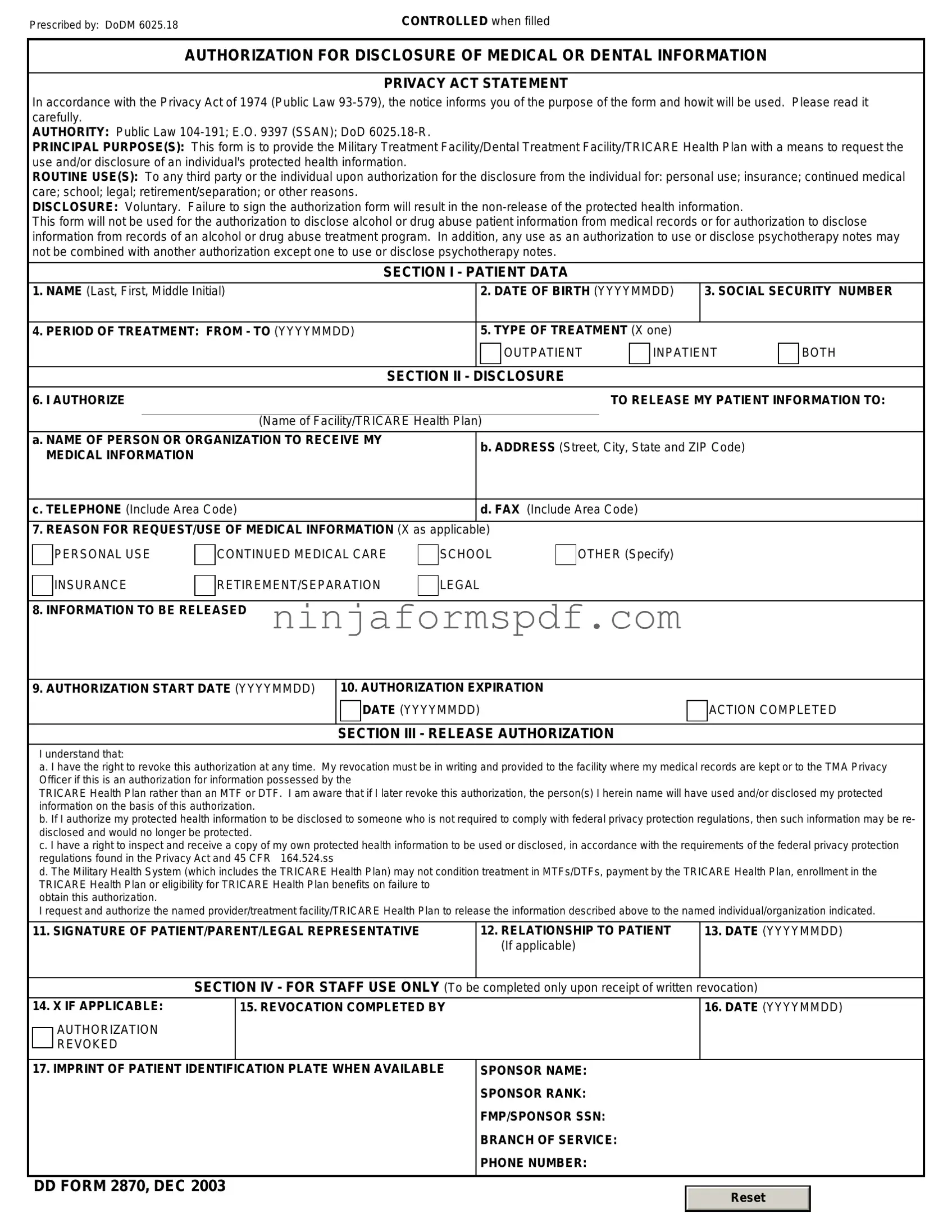The DD 2870 form, also known as the Authorization for Disclosure of Medical or Dental Information form, serves a vital role in safeguarding patients' privacy while also allowing the necessary sharing of medical or dental records within specific, authorized circles. This form finds its counterparts in both the military and civilian realms, each designed with the privacy and consent of the individual at their core. Various documents across different sectors share key features with the DD 2870, illustrating the universal need for strict protocols in the handling of personal medical information.
The Health Insurance Portability and Accountability Act (HIPAA) Authorization Form is a civilian counterpart to the DD 2870. It allows patients to authorize the disclosure of their health information to designated individuals or entities. Like the DD 2870, the HIPAA form is heavily regulated to ensure the privacy and security of the patient's medical information, emphasizing the need for explicit consent before any sharing of personal health data.
The Release of Information (ROI) form used in civilian healthcare settings parallels the DD 2870. It permits healthcare providers to share a patient's medical records with other specified parties. The ROI form covers a broad range of information sharing, from medical history to treatment plans, similar to the DD 2870, which also facilitates a comprehensive exchange of medical data under authorized circumstances.
The Family Educational Rights and Privacy Act (FERPA) Release Form, while primarily focused on educational records, shares the consent-based release mechanism seen in the DD 2870 form. FERPA allows students or their guardians to authorize the disclosure of their educational records in a manner that mirrors the consent process for medical records, underscoring the importance of consent in information sharing across different types of personal data.
The Power of Attorney (POA) for Healthcare document, although broader in scope, relates closely to the consent aspect of the DD 2870. A POA for Healthcare grants a designated individual the authority to make healthcare decisions on behalf of someone else, potentially including the release of medical information, aligning with the DD 2870’s function of authorizing information sharing based on the patient's consent.
The General Consent for Medical Treatment form, required by many healthcare providers before delivering care, touches on the themes of the DD 2870 through its emphasis on informed consent. While it primarily focuses on treatment consent, it sometimes encompasses authorization for sharing medical information with other healthcare providers, paralleling the DD 2870's objective to facilitate the flow of necessary medical data under specific conditions.
The Social Security Administration's Authorization to Disclose Personal Information to a Third Party form resembles the DD 2870 in its purpose to share sensitive personal information with authorized entities. This document is essential for individuals who need to authorize the SSA to release personal information, echoing the DD 2870’s role in allowing the controlled dissemination of medical or dental records.
Finally, the Veterans Affairs (VA) Release of Information form is specifically tailored to veterans, authorizing the disclosure of medical records within the VA system or to external entities. This form mirrors the DD 2870 in its military context, providing a means for veterans to consent to the sharing of their medical information, similarly ensuring that such exchanges are conducted securely and responsibly.
In conclusion, the DD 2870 form shares fundamental characteristics with various authorization and consent forms across different sectors. Whether it's for medical, educational, or personal information, the underlying principle of these documents is the protection of individual privacy through consent. This commonality underscores the universal importance of respecting and securing personal data in all areas of administration.

